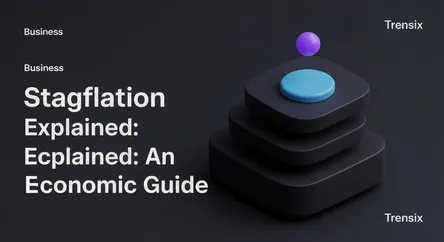Business
Stagflation Explained: An Economic Guide

Stagflation is the toxic economic mix of slow growth, high unemployment, and rising prices. Understand this challenging financial phenomenon.
What is it?
Stagflation is a portmanteau of 'stagnation' and 'inflation,' describing a rare and difficult economic situation where growth is slow, unemployment is high, and prices are rising simultaneously. Traditionally, high inflation occurs during periods of strong economic growth, and vice versa. Stagflation breaks this pattern, creating a challenging environment for governments and central banks because the usual tools to fight inflation (like raising interest rates) can worsen unemployment and slow growth even further.
Why is it trending?
Fears of stagflation are growing globally due to a perfect storm of economic pressures. The post-pandemic recovery has been complicated by persistent supply chain disruptions, soaring energy costs, and geopolitical conflicts. Central banks are aggressively raising interest rates to combat record-high inflation, but this risks choking off economic growth. With forecasts for GDP growth being revised downwards while inflation remains stubbornly high, economists are concerned that the world could be entering a stagflationary period similar to the 1970s.
How does it affect people?
For the average person, stagflation creates a painful financial squeeze. Rising inflation erodes purchasing power, meaning your money buys less and the cost of living—from groceries to gas—goes up. At the same time, stagnant economic growth leads to fewer job opportunities and increased job insecurity, as companies may freeze hiring or resort to layoffs to cut costs. This dual threat of dwindling income prospects and rising expenses puts significant strain on household budgets, making it harder to save, invest, or even cover basic necessities.